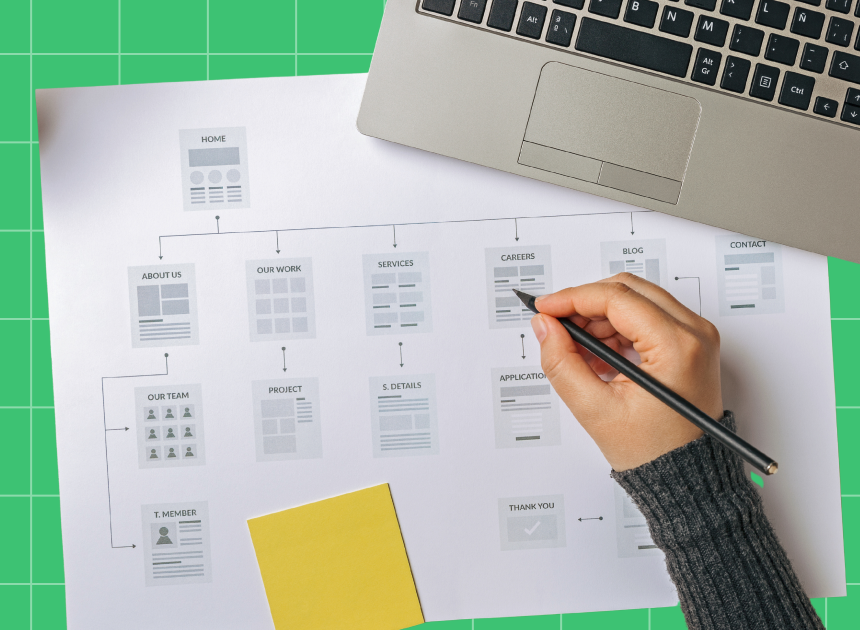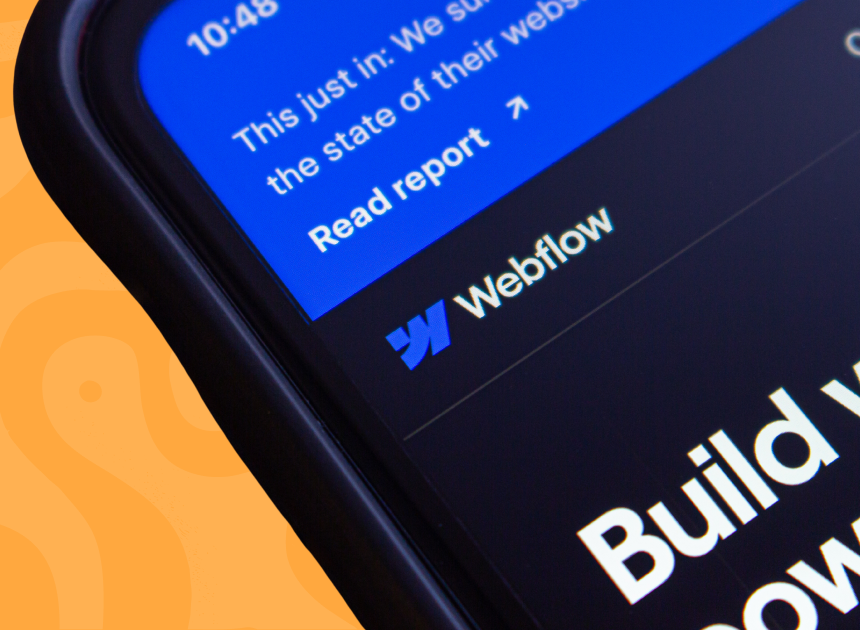Your website has been running for a few years now. Maybe it's starting to feel a little dated, or you've noticed some performance issues creeping in. The question that every practice owner eventually faces is whether to keep patching things up or start fresh with a complete redesign.
It's not always an obvious choice. You might think you can save money by making small updates to your existing site. But here's what most practices don't realize: when you actually need a redesign, starting fresh from the ground up is almost always more cost-effective than trying to renovate what you already have.
Here's how to figure out when it's time to redesign, and why starting fresh usually makes the most financial sense.
Signs It's Time to Redesign Your Website
Your Site Looks or Feels Outdated
If your website design feels like it's from 2020 or earlier, patients notice. Modern web design has evolved toward cleaner layouts, faster loading, and more intuitive navigation. An outdated design suggests your practice might be behind the times in other areas too.
Performance Is Declining
Page load times above 3 seconds, especially on mobile, indicate structural problems that surface-level fixes can't solve. If your Google PageSpeed scores are below 70, or if you notice pages loading slowly, your platform is likely holding you back.
Your Content Strategy Has Changed
Maybe you've added new services like Invisalign or dental implants. Perhaps you want to target different patient demographics or emphasize different aspects of your practice. Significant content strategy changes usually require structural updates that make rebuilding more efficient.
You're Losing Patients to Technical Issues
When appointment booking forms break, pages don't load properly on mobile devices, or patients can't find the information they need, you're losing revenue to technical problems. These issues often indicate platform limitations that can't be fixed with minor updates.
Competitors' Sites Make Yours Look Amateur
If other practices in your area have modern, fast-loading websites that make yours look dated by comparison, you're at a competitive disadvantage. Patients often judge the quality of dental care by the quality of the website, especially when choosing between unfamiliar practices.
Your Team Struggles to Update Content
If simple content updates require developer intervention, or if your team avoids making changes because the system is too complicated, your platform is hindering your marketing efforts. Modern platforms should give your team direct control over routine updates.
Your Business Strategy Evolves
Opening new locations, rebranding, adding significant services, or changing your target market usually requires more than cosmetic updates. These changes often need structural modifications that make rebuilding more efficient than retrofitting.
Understanding What a Real Redesign Involves
Most practices think of redesigning as updating colors, swapping out photos, and maybe reorganizing some content, but effective redesigns go much deeper than surface-level changes.
A proper redesign addresses:
- Visual design and branding that reflects your current practice
- User experience that guides patients toward booking appointments
- Content strategy that showcases your services effectively
- Technical performance that loads quickly and converts visitors
- Mobile optimization that works flawlessly on phones and tablets
- SEO & AEO foundation that helps patients find you online
When you try to retrofit these improvements onto an existing website, especially one that's a few years old, you run into structural limitations that make the project more expensive and less effective than rebuilding.
Why Rebuilding Is Usually More Cost-Effective
Old Platforms Fight Modern Standards
If your site was built more than four years ago, it was likely created before current web performance standards, mobile-first design principles, modern browser/code updates, and modern SEO requirements became standard. Trying to force an old WordPress theme or Wix template to meet today's expectations is like trying to retrofit a 2015 smartphone to run current apps smoothly.
You end up paying developers to work around limitations, patch compatibility issues, and jerry-rig solutions that would be built-in features on a modern platform.
Technical Debt Compounds
Every workaround, plugin, and custom modification added to an existing site creates technical debt. Technical debt is a metaphorical concept in software development that refers to the future cost incurred by choosing an easy or quick solution now instead of a better, more time-consuming approach. It often arises when developers prioritize speed over code quality, leading to suboptimal solutions that will require refactoring or improvement in the future.
When you redesign on top of an increasingly patchwork foundation of an outdated site, you're not just paying for new design and content, you're paying to untangle years of accumulated complexity.
Starting fresh eliminates this debt entirely, giving you cleaner code, better performance, and lower maintenance costs going forward.
Platform Migrations Happen Anyway
Most redesign projects that attempt to stay on outdated platforms end up requiring platform changes mid-project when teams realize the current system can't deliver what's needed. This approach costs significantly more than planning the platform change from the beginning.
Maintenance Costs Reset
Rebuilding on a modern platform like Webflow dramatically reduces ongoing maintenance costs compared to trying to keep an aging WordPress site running smoothly. The time and money saved on monthly upkeep helps offset the cost of a rebuild over time and frees up the budget to make functional updates or additions to the site.
The False Economy of Cheap Updates
Many practices try to save money by making minimal updates to existing sites. This approach seems cost-effective initially but often leads to higher long-term costs.
Patchwork Solutions Break
Quick fixes and workarounds tend to fail when platforms update or traffic increases. You end up paying for emergency repairs and losing patients when things break.
Performance Problems Persist
Surface-level updates can't fix underlying speed and reliability issues. Slow sites convert fewer visitors into patients, making your marketing less effective and more expensive.
Limited Functionality
Trying to add modern features like online appointment booking, patient education tools, or treatment visualization to old platforms often requires expensive custom development that costs more than rebuilding.
Security Vulnerabilities Remain
Older platforms, especially WordPress sites with multiple plugins, become increasingly vulnerable to security threats. The cost of dealing with a compromised site exceeds the cost of rebuilding on a more secure platform.
What Modern Redesigns Deliver
When you rebuild on a current platform, you get benefits that aren't possible with patch-and-update approaches.
Built-in Performance
Modern platforms like Webflow automatically generate optimized code that loads quickly without requiring additional plugins or tools. Your site can achieve Google PageSpeed scores of 90+ right out of the gate.
Mobile-First Design
Rather than trying to make a desktop-focused site work on mobile, rebuilding lets you design for mobile users first, then enhance the experience for larger screens.
Integrated SEO
Instead of relying on SEO plugins that may conflict with other tools, modern platforms include SEO optimization as a core feature, making it easier to rank well in local search results.
Team-Friendly Management
Your office manager can update content, add new staff members, and modify service information without needing developer help, reducing ongoing costs and allowing faster updates.
Future-Proof Foundation
Starting with current technology means your site will remain modern and functional longer, extending the time between major updates and saving you money.
Making the Investment Decision
The key question isn't whether you can afford to rebuild your site. It's whether you can afford not to.
Calculate Your Current Costs
Add up what you're spending on:
- Monthly hosting and plugin fees
- Developer time for updates and fixes
- Lost patients due to poor site performance
- Ineffective marketing due to conversion problems
These ongoing costs often exceed the one-time investment of rebuilding within 18-24 months.
Consider Your Competition
If other practices in your area have modern, high-performing websites, you're losing potential patients who compare options online before calling anyone.
Factor in Growth Plans
A modern website platform such as Webflow supports business growth more effectively than trying to scale on an outdated platform. The flexibility to add new features, locations, or services without major technical hurdles is valuable as your practice evolves.
The Bottom Line
When it's time for a website redesign, starting fresh almost always delivers better results at a lower total cost than trying to renovate an existing site.
Yes, rebuilding requires a higher upfront investment, but it eliminates the technical debt, platform limitations, and ongoing maintenance costs that make renovation approaches more expensive over time.
Your website is often the first impression potential patients have of your practice. If it's slow, outdated, or difficult to use, that's the impression you're giving. Modern patients expect modern experiences, and delivering that experience requires a modern foundation.
The question isn't whether your current site can be patched up to look better. It's whether you want to invest in a solution that will serve your practice effectively for years to come, or keep paying to maintain a system that's fighting against you.
Ready to Explore Your Options?
We offer comprehensive website audits that assess your current site's performance, identify specific issues, and provide clear recommendations for improvement. During the audit, we'll show you exactly what's holding your site back and outline what a modern redesign could deliver for your practice.
Schedule your free website audit to get clarity on your site's next steps and see what's possible with a modern approach.




